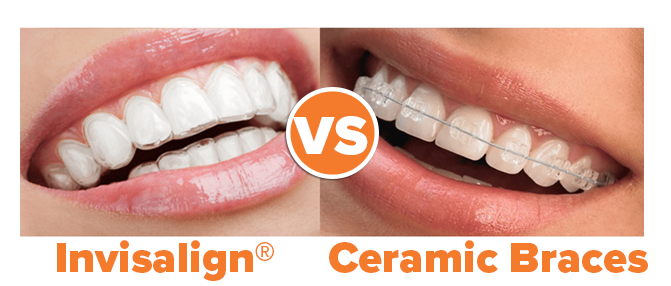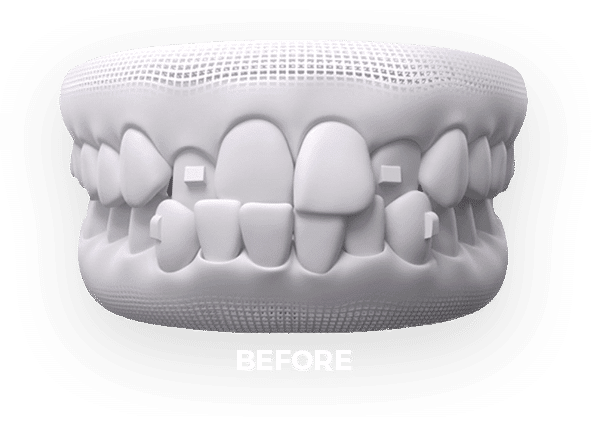Invisalign for Teens: A Modern Solution to Straightening Young Smiles
Invisalign for Teens: A Modern Solution to Straightening Young Smiles
Blog Article
Invisalign vs. Traditional Dental braces: Which Choice Is Right for You?
When thinking about orthodontic treatment, the option between Invisalign and traditional dental braces presents numerous essential factors that warrant cautious evaluation. Invisalign provides a discreet choice with removable aligners, while typical braces give a much more noticeable yet effective option for severe misalignment. Each alternative includes distinctive advantages and drawbacks related to aesthetic appeals, comfort, therapy period, and expense. Recognizing these nuances is crucial for making an educated decision that lines up with your individual choices and lifestyle. The concern continues to be: which option will best satisfy your orthodontic demands and expectations?
Summary of Therapy Alternatives

On the other hand, standard dental braces consist of metal braces and cords that are adhered to the teeth. This approach applies constant stress with time to achieve positioning. While efficient for intricate orthodontic issues, conventional dental braces call for normal sees for adjustments and can position difficulties in preserving dental health as a result of the difficulty of cleaning up around wires and brackets.
Both options have their values, and the selection frequently hinges on certain oral problems, way of living choices, and person compliance. Ultimately, getting in touch with an orthodontic expert is vital for determining the most appropriate therapy plan customized to specific requirements. Understanding the nuances of each choice can considerably influence the overall success of orthodontic therapy.
Aesthetic Considerations
A considerable factor influencing the selection between Invisalign and typical braces is the visual appeal each therapy offers. Invisalign aligners are crafted from clear plastic, making them essentially invisible when used.
In contrast, standard dental braces include steel braces and wires, which can be extra visible. While innovations in orthodontic innovation have actually brought about the development of smaller sized braces and colored elastics, standard dental braces still preserve an even more obvious profile. For some individuals, the presence of braces may deter them from seeking needed treatment.
Eventually, the selection between Invisalign and typical braces might pivot on individual choices concerning aesthetic appeals. People who focus on discernment often favor Invisalign, while those that are much less worried concerning visibility may go with conventional braces. Comprehending the visual ramifications of each choice is critical for making an educated choice that straightens with one's way of living and choices.
Convenience and Convenience

In regards to ease, Invisalign aligners are detachable, enabling patients to appreciate their favored foods without constraint and keep optimum dental health. Brushing and flossing are simplified, as the aligners can be gotten during these regimens, whereas typical dental braces need cautious navigating around brackets and wires.
In comparison, conventional braces demand routine modifications, making them much less hassle-free for those with active timetables. Overall, the comfort and benefit of Invisalign make it an enticing option for numerous people seeking orthodontic therapy.
Therapy Duration and Performance
While both Invisalign and standard dental braces work in correcting dental imbalances, the duration of treatment can differ considerably in between the two choices. Typically, Invisalign treatment can take anywhere from 12 to 18 months, relying on the complexity of the situation. The clear aligners function by gradually shifting teeth right into their wanted settings, and routine follow-ups with an orthodontist aid make certain development stays on course.
On the other hand, conventional dental braces often require a longer commitment, generally varying from 18 months to three years. This is because of their set nature and using cables home and brackets, which can be much more efficient for serious imbalances and intricate instances (Invisalign). The treatment efficiency of standard dental braces is well-documented, as they permit specific changes and greater control over tooth movement
Ultimately, the option in between Invisalign and typical dental braces might depend upon both the expected treatment duration and the specific oral concerns handy. Consulting with an orthodontist is crucial, as they can provide customized recommendations based upon specific requirements, making certain the picked technique aligns with desired timeframes and outcomes.
Price Contrast and Insurance Coverage Options
Price plays a substantial function in the decision-making process for people thinking about orthodontic treatment, whether selecting Invisalign or typical dental braces. On average, the price of Invisalign varieties from $3,000 to $8,000, while conventional dental braces normally cost in between $2,000 and $6,000. Aspects affecting these costs include the complexity of the situation, the period of treatment, and geographical area.
Insurance policy coverage can significantly influence out-of-pocket expenses. go to this website Several dental insurance policy plans give partial protection for orthodontic therapies, but the specifics can differ extensively. It is crucial for individuals to review their insurance coverage plans to identify the level of coverage for either choice. Generally, conventional dental braces may be a lot more often covered by insurance policy plans compared to Invisalign, which some insurers categorize as an aesthetic treatment.
Furthermore, a number of orthodontic techniques offer flexible layaway plan, making both treatment choices much more available. People should ask about possible financing choices and discounts for in advance repayments. Evaluating the overall expense, consisting of insurance benefits and layaway plan, is essential for making an informed decision that aligns with both aesthetic preferences and spending plan factors to consider.

Conclusion
In recap, the selection in between Invisalign and traditional dental braces rests on several factors, consisting of visual choices, comfort, treatment duration, and price. Invisalign uses a discreet, removable option that promotes dental hygiene and nutritional versatility, while standard braces might be much more suitable for complex oral issues and typically come with a lower rate point. Eventually, examination with an orthodontist is vital to assess private conditions and determine the most proper therapy option for accomplishing ideal oral placement.
When considering orthodontic treatment, the option in between Invisalign and typical dental braces presents several essential aspects that warrant cautious evaluation.Comparing Invisalign and conventional braces exposes unique treatment choices for orthodontic modification.While both Invisalign and standard dental braces are efficient in remedying oral imbalances, the duration of treatment can vary dramatically in between the 2 choices.Expense plays a considerable function in the decision-making process for individuals considering orthodontic treatment, whether opting for Invisalign or conventional dental braces.In summary, the option in between Invisalign and standard braces hinges on numerous factors, including aesthetic preferences, convenience, therapy period, and cost.
Report this page